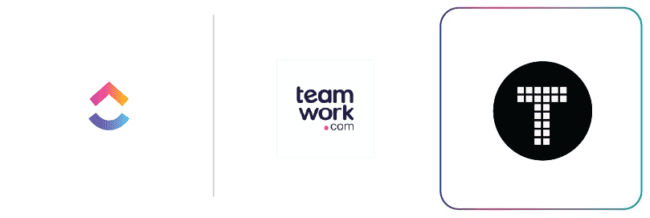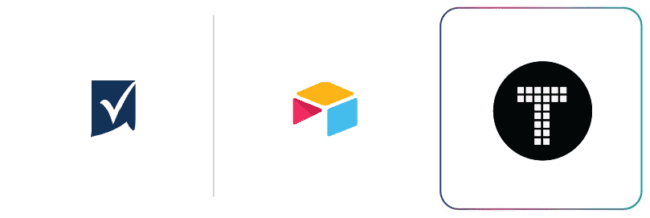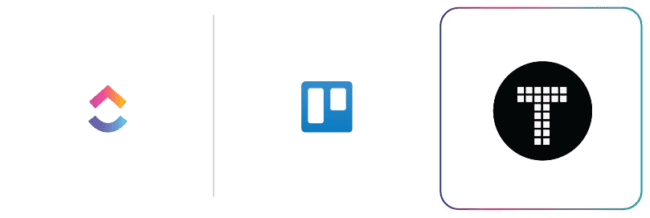LIMITED TIME OFFER
Replace all of these

with a single tool for just $1 per month for your entire team
UNLIMITED USERS
UNLIMITED PROJECTS
UNLIMITED CHATS
UNLIMITED DOCS
UNLIMITED STORAGE
AND MORE..
Project Management Software for Project Documentation: A Comprehensive Guide

Project documentation is an essential component of successful project management. It serves as a comprehensive record of a project’s objectives, goals, tasks, and outcomes. In this guide, we will delve into the importance of project documentation, explore project management software, discuss its integration with project documentation, provide tips for choosing the right software, and highlight best practices for its effective use.

Understanding the Importance of Project Documentation
Project documentation encompasses the process of creating, organizing, and maintaining project-related information. It acts as a reference point for stakeholders, helping them understand the project’s progress, identify potential risks, and make informed decisions. Furthermore, project documentation serves as a historical record that can be referenced for future projects, ensuring continuity and maximizing efficiency.
When it comes to project management, documentation is more than just a formality. It is a vital tool that ensures the success of a project. Without proper documentation, projects can become disorganized, leading to confusion, delays, and even failure. Therefore, understanding the importance of project documentation is crucial for any project manager or team member.
Defining Project Documentation
Project documentation includes various artifacts such as project charters, requirements documents, scope statements, project plans, meeting minutes, progress reports, and more. Each of these artifacts captures specific information necessary for successful project completion.
Let’s take a closer look at some of these artifacts:
- Project charters: These documents outline the project’s objectives, scope, stakeholders, and overall approach. They provide a high-level overview of the project and set the foundation for its success.
- Requirements documents: These documents detail the functional and non-functional requirements of the project. They help ensure that the project meets the needs and expectations of the stakeholders.
- Scope statements: These documents define the boundaries of the project, including what is included and what is excluded. They help prevent scope creep and keep the project focused.
- Project plans: These documents outline the tasks, timelines, resources, and dependencies of the project. They provide a roadmap for the project team to follow and help keep everyone on track.
- Meeting minutes: These documents capture the discussions, decisions, and action items from project meetings. They serve as a record of what was discussed and agreed upon, ensuring accountability and follow-up.
- Progress reports: These documents track the project’s progress against its goals and milestones. They provide visibility into the project’s status and help identify any issues or risks that need to be addressed.
The Role of Project Documentation in Project Management
Project documentation plays a crucial role in project management by providing a framework for collaboration, communication, and knowledge transfer. It facilitates effective decision-making, helps manage stakeholder expectations, and improves project transparency. Moreover, project documentation enables project managers to track progress, identify potential bottlenecks, and ensure project deliverables are met.
Effective project documentation ensures that everyone involved in the project is on the same page. It provides a common understanding of the project’s goals, objectives, and requirements. This clarity helps minimize misunderstandings and ensures that the project team is working towards a shared vision.
Additionally, project documentation serves as a valuable source of knowledge transfer. When team members come and go, having well-documented project information allows new members to quickly get up to speed and contribute effectively. It also helps prevent knowledge loss when key team members leave the project or the organization.
Furthermore, project documentation enhances project transparency. By documenting project progress, decisions, and risks, stakeholders can stay informed and have a clear view of the project’s status. This transparency builds trust and confidence among stakeholders and enables them to provide timely feedback and support.
In conclusion, project documentation is not just a bureaucratic task but a critical component of successful project management. It provides structure, clarity, and accountability throughout the project lifecycle. By investing time and effort into creating and maintaining comprehensive project documentation, project managers and teams can increase their chances of delivering successful projects on time and within budget.
Exploring Project Management Software
Project management software offers a digital solution for organizing, managing, and tracking projects. It streamlines various project management processes, enhances team collaboration, and automates repetitive tasks, enabling project managers to focus on strategic decision-making.
With the increasing complexity of modern projects, project management software has become an essential tool for businesses across industries. Whether it’s a small-scale project or a large-scale enterprise-level initiative, project management software provides the necessary framework to ensure successful project execution.
Task management
One of the key features of project management software is task management. This feature allows project managers to create and assign tasks to team members, set deadlines, and track progress. It provides a clear overview of the project’s timeline and ensures that everyone is aware of their responsibilities.
Scheduling capabilities
In addition to task management, project management software also includes scheduling capabilities. This feature enables project managers to create project timelines, set milestones, and allocate resources accordingly. By visualizing the project schedule, project managers can identify potential bottlenecks and make necessary adjustments to ensure timely project delivery.
Resource allocation

Resource allocation is another crucial feature offered by project management software. It allows project managers to assign resources to specific tasks, ensuring that the right people are working on the right tasks at the right time. This feature helps optimize resource utilization and prevents overloading or underutilization of team members.
Budgeting
Budgeting is yet another important aspect of project management software. It enables project managers to set project budgets, track expenses, and monitor financial performance. By having real-time insights into project costs, project managers can make informed decisions and take corrective actions if necessary.
Reporting capabilities
Reporting capabilities are also a significant component of project management software. These capabilities allow project managers to generate various reports, such as progress reports, resource utilization reports, and budget reports. These reports provide valuable insights into project performance and help stakeholders stay informed about the project’s status.
Effective communication
Effective communication is crucial for project success, and project management software facilitates seamless communication among team members and stakeholders. It provides communication tools, such as instant messaging, discussion boards, and document sharing, enabling efficient collaboration and knowledge sharing.
Benefits of using project management software
Improved project visibility
When it comes to the benefits of using project management software, the advantages are numerous. One of the primary benefits is improved project visibility. Project management software provides a centralized platform where all project-related information is stored, making it easily accessible to all team members. This transparency enhances accountability and ensures that everyone is on the same page.
Enhances team collaboration and communication
Furthermore, project management software enhances team collaboration and communication. With features like real-time updates, task assignments, and document sharing, team members can collaborate effectively, even if they are geographically dispersed. This promotes a sense of unity and fosters a collaborative work environment.
Eliminates manual effort
In terms of productivity, project management software plays a vital role. By automating repetitive tasks and providing a structured framework, it eliminates manual effort and reduces the chances of errors. This allows team members to focus on their core responsibilities, resulting in increased productivity and efficiency.
Real-time data analysis
Another significant benefit of using project management software is the ability to make better decisions through real-time data analysis. Project management software collects and analyzes project data, providing valuable insights into project performance, resource utilization, and budgetary aspects. These insights empower project managers to make data-driven decisions and take proactive measures to ensure project success.
Centralized repository for project documentation
Additionally, project management software serves as a centralized repository for project documentation. It eliminates the need for scattered documents and ensures that all project-related information is stored in one place. This reduces the likelihood of information loss or miscommunication, making it easier for team members to access and refer to project documentation when needed.
In conclusion, project management software offers a wide range of features and benefits that significantly contribute to successful project execution. From task management and scheduling to resource allocation and reporting, project management software streamlines project processes and enhances collaboration. By leveraging the power of technology, project managers can effectively manage projects, improve productivity, and make informed decisions for project success.
Integrating Project Management Software with Project Documentation
Integrating project management software with project documentation can streamline project execution and enhance documentation management. By linking project artifacts directly within the software, project managers can easily access and update project documentation, ensuring everyone is working with the latest information.
Steps to Integration
Integrating project management software with project documentation involves a few key steps. First, identify the relevant project artifacts and ensure they are in a digital format. Next, choose a project management software that supports document management and integration capabilities. Then, import the project artifacts into the software and organize them in a logical structure. Finally, communicate the integration process to the project team and provide training, if necessary.
Potential Challenges and Solutions
While integrating project management software with project documentation offers numerous benefits, it can also present challenges. These may include resistance from team members, data compatibility issues, or a steep learning curve for new software. To overcome these challenges, ensure clear communication about the benefits of integration, provide training and support for team members, and select software that is user-friendly and compatible with existing systems.
Choosing the Right Project Management Software for Documentation

Selecting the right project management software for documentation requires careful consideration of several factors. Each project has unique requirements, and the software chosen should align with these needs to maximize project efficiency and success.
Factors to Consider
Consider factors such as the complexity and scale of the project, team size, collaboration needs, reporting requirements, budget constraints, and existing software infrastructure. Evaluate software options based on these factors to identify the best fit for your project documentation needs.
Top Project Management Software for Documentation
There are several reputable project management software options available that are well-suited for project documentation. Some of the top choices include Teamhub, Asana, Monday.com, Trello, Jira, and Microsoft Project. Each of these software solutions offers unique features and functionalities, so it’s essential to assess their compatibility with your project’s requirements.
Best Practices for Using Project Management Software for Documentation
To maximize the benefits of project management software for documentation, it is important to follow best practices that promote effective use and optimal outcomes.
Tips for Effective Use
First and foremost, ensure that all project team members are trained in using the software and understand its functionalities. Establish clear project documentation guidelines, such as naming conventions and version control practices. Regularly update and maintain project documentation to reflect changes and progress accurately. Utilize collaboration features to foster effective communication and shared understanding among team members.
Common Mistakes to Avoid
Avoid common pitfalls such as neglecting to update project documentation regularly, not leveraging all the software features available, or failing to communicate changes and updates effectively. Additionally, it is crucial to strike a balance between automation and human judgment, as excessive automation can sometimes hinder adaptability and critical thinking.
In conclusion, effective project documentation is key to successful project management. By utilizing project management software and integrating it with project documentation, teams can enhance collaboration, streamline processes, and improve project outcomes. Consider the factors involved in selecting the right software and follow best practices to maximize the benefits of using project management software for documentation. By doing so, project managers can ensure efficient project execution, mitigate risks, and deliver successful projects consistently.


